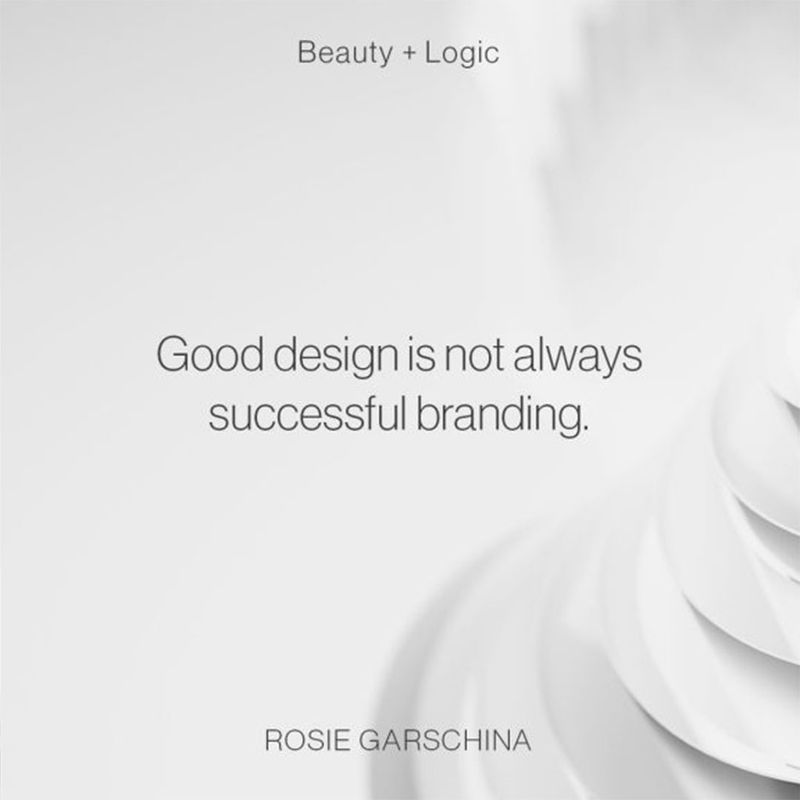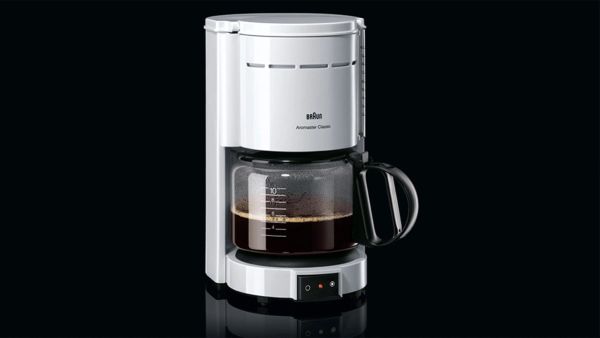
Beauty + Logic: Design Still Matters
by Rosie Garschina, Creative Director
Growing up in the suburbs of New York, I was obsessed with my mother’s white Braun coffee maker. I remember when the KF400 Aromaster had fully brewed, it would create two perfectly stacked black and white cylinders. I was a suburban teenager living on Long Island who did not drink coffee, but more than anything, I wanted this German coffee maker.
Since then, Dieter Rams and his 10 Principles of Good Design have become a huge influence on my practices as a designer. I have several of his Vitsœ shelving units installed in my home. The systems are highly modular and designed to conform to any living space. They are beautifully crafted pieces that have a timeless elegance and are ethical in their intent to sustain and adapt over the course of one’s lifetime. It is this type of pure and purposeful design that I truly believe in.
Dieter’s guidelines continue to be a great reference for creating simple, effective design solutions. Until recently, it was easy to classify a product as well-designed. But what might be more important is recognizing that good design is not always successful branding. Last November, we saw a generic, almost template design become the most effective piece of branding in 2016: a poorly crafted baseball hat captured the essence of an entire movement while challenging the conventions and ethics we value as designers.


So how is good design different from effective design? Do Dieter’s design principles hold up amidst the ubiquity of this newly iconic piece of branding?
Principle #3: Good design is aesthetic.
“The aesthetic quality of a product is integral to its usefulness because products we use every day affect our person and our well-being. But only well-executed objects can be beautiful.”
In this case, the lack of design aesthetic was so sincere and foolproof that it was able to capture a populist mindset. Hillary Clinton’s branding reinforced an establishment narrative with polished typography and a refined system. In this scenario, the aesthetically beautiful choice was undesirable.
Principle #6: Good design must be honest.
“It does not make a product more innovative, powerful, or valuable than it really is. It does not attempt to manipulate the consumer with promises that cannot be kept.”
Is a billionaire wearing a baseball cap an honest application of this design? Or just good branding? Honest or not, the product became so powerful and well-associated with anti-establishment rhetoric, that its owner’s true intentions did not matter.
Principle #10: Good design is as little design as possible.
“Less, but better – because it concentrates on the essential aspects, and the products are not burdened with non-essentials. Back to purity, back to simplicity.”
For some, a red baseball hat with a tagline set in Times New Roman could symbolize something extremely pure: an iconic piece of collateral that represents the persona of an unpretentious, everyday American.


Like many designers, I have been searching for lessons. Do Dieter’s principles only apply to a specific, design-educated audience? Do you have to understand design in order to really appreciate it?
Sometimes I wonder if the KF400 Aromaster spoke to something more powerful. Why did it resonate with me so well at the time? Did it symbolize something aspirational? Does a billionaire wearing a red baseball hat tap into a similar concept?
When creating content for global audiences, we often need to consider the context of a local market. An object could mean one thing to a person in Lisbon, and something entirely different to someone in Istanbul. One of the creatives I worked with at Spotify called this methodology “glocal” branding. The objective with this approach is to create something culturally relevant for a broad range of markets.
I don’t think that Dieter or I would ever compromise our design ethics, but perhaps we need to be more diligent about applying this contextual thinking to the way we communicate with each other. Beauty—in design or in general—is a subjective construct, and we should take the time to live vicariously through the feelings, perspectives, and attitudes of another. And as branding professionals, stop projecting and start really listening.
Explore more
New business inquiries.
How can we help?
NYC 11:05
STK 05:05
LA 08:05
Get our newsletter
Sign up for updates,
insights, and inspirations
from our studio.




